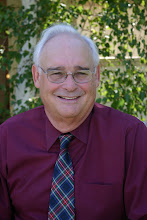
California’s Democratic Congressman Jim Costa of Fresno is an unabashed booster of trains. As a state assemblyman and later state senator, he pushed doggedly on expansion of Amtrak service through Central California. He lobbied for the upgrading of Amtrak stations and construction of new ones. He regularly rode Amtrak from his Fresno home to Sacramento, the state’s capital.
So it’s no surprise that he is wearing a smile from ear to ear these days as California has joined several other states in applying for federal stimulus money to build a high-speed rail system.
California is seeking more than half of the $8 billion that Congress and President Barack Obama set aside for high-speed and intercity rail projects across the country.
Costa addressed a Fresno audience of San Joaquin Valley regional planners on Oct. 2, the same day Gov. Arnold Schwarzenegger submitted California’s $4.7 billion application for high-speed rail funding. Costa believes California’s chances are darn good.
Give Costa a lot of the credit for that. His sheer tenacity helped convince California voters to approve a $10 billion bond on the November 2008 ballot to continue design and planning for a high-speed rail system. This was after naysayers said the measure was doomed by the slumping economy and the “Buck Rogers” image of the project.
But voters did approve the bond, validating Costa’s belief that the state is long overdue for investment in its infrastructure.
To regional planners, who focus much of their energies on improving California’s transportation systems, Costa likened building a high-speed rail system to the 1950s and 1960s, when Californians created the nation’s premiere education system, a massive state water project and a futuristic freeway system.
Costa’s comparisons did not end there. He noted Republican President Dwight D. Eisenhower built the massive federal highway system during troubled economic times. And Republican President Abraham Lincoln pushed through a transcontinental railroad line when the nation was divided by war, inflation was raging and the first printing of paper money was underway.
For those tempted to say these times are not the right times to invest billions of dollars in a high-speed rail system, Costa counters with historian Stephen Ambrose’s “Nothing Like It in the World,” an account of how the transcontinental railroad came into being despite overwhelming odds.
High-speed rail “is a tremendous opportunity for California and the nation,” said Costa, who contends California’s application is strengthened by voters already approving matching funds for the project and by the planning that has already been completed. California is a lot closer to breaking ground than other proposals.
Costa said applications can be expected to be submitted for stimulus funds to help pay for high-speed rail projects in 11 of the nation’s transportation corridors. In addition to California, projects in the Midwest and in the Eastern corridor will be the most competitive, he said.
But there’s no doubt about it in Costa’s mind. Californians “will get to ride on high-speed rail.”

No comments:
Post a Comment